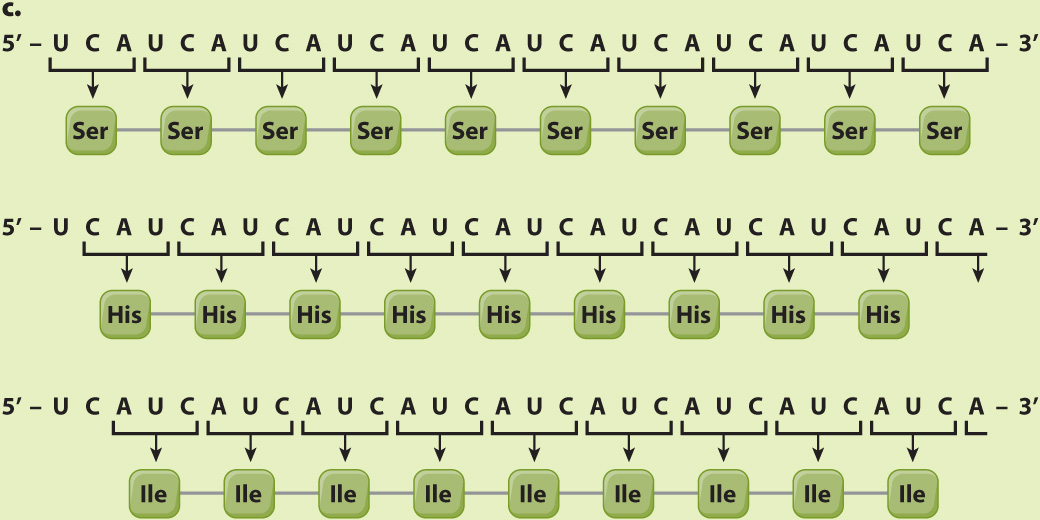HOW DO WE KNOW?
FIG. 4.16
How was the genetic code deciphered?
BACKGROUND The genetic code is the correspondence between three-
METHOD Khorana and his group made RNAs of known sequence. They then added these synthetic RNAs to a solution containing all of the other components needed for translation. By adjusting the concentration of magnesium and other factors, the researchers could get the ribosome to initiate synthesis with any codon, even if not AUG.
EXPERIMENT 1 AND RESULTS When a synthetic poly(U) was used as the mRNA, the resulting polypeptide was polyphenylalanine (Phe–

CONCLUSION The codon UUU corresponds to Phe. The poly(U) mRNA can be translated in three possible reading frames, depending on which U is the 5′ end of the start codon, but in each of them, all the codons are UUU.
EXPERIMENT 2 AND RESULTS When a synthetic mRNA with alternating U and C was used, the resulting polypeptide had alternating serine (Ser) and leucine (Leu):

CONCLUSION Here again there are three reading frames, but each of them has alternating UCU and CUC codons. The researchers could not deduce from this result whether UCU corresponds to Ser and CUC to Leu or the other way around; the correct assignment came from experiments using other synthetic mRNA molecules.
EXPERIMENT 3 AND RESULTS When a synthetic mRNA with repeating UCA was used, three different polypeptides were produced—

CONCLUSION The results do not reveal which of the three reading frames corresponds to which amino acid, but this was sorted out by studies of other synthetic polymers.
SOURCE Khorana, H. G. 1972. “Nucleic Acid Synthesis in the Study of the Genetic Code.” In Nobel Lectures, Physiology or Medicine 1963–